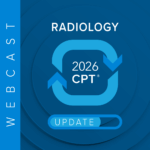This story is in recognition of National Hispanic Heritage Month.
The Centers for Medicare & Medicaid Services (CMS) Office of Minority Health has released healthcare materials that are targeted for our Hispanic patient population in honor and support for National Hispanic heritage month.
The recognition is key since Hispanic people have lower rates of health insurance coverage compared to their non-Hispanic counterparts and are disproportionately affected by chronic health conditions, such as diabetes, cancer, and health disease (Health Observance, 2022). To combat this disparity, the question is posed, “Are we providing our outreach and education in a culturally supportive means?”
I think this is a good reminder to assess and consider English as a second language is often a barrier to the care provided in the United States.
Remembering my days on the frontline as a medical social worker, there were numerous cases where I was working with Spanish speaking patients and families. I would try to complete my initial assessments and coordination of care services by relying on the hospital translator services which at the time was a blue phone that was never conveniently located in the hospital.
Eventually I moved to my cell phone putting translator services on speaker in the patient room to get us through the various care coordination and social work discussions. I remember I would often watch providers roll in the room and use family members as the official translator for the patient’s medical care and consents for procedures. Thankfully, hospital policies have progressed, so hopefully this is no longer common practice.
However, how often in the clinical setting are we asking the question to our bilingual patients, “Would you prefer a translator or interpreter in your native or primary language?” Here are a couple of examples of why this important. I often listen to our partner podcast, Talk Ten Tuesday, and each Tuesday I hear Laurie Johnson and Dr. Erica Remer list diagnoses and ICD-10 codes that I can’t even pronounce. Despite my advance degree, I have a health literacy deficit in understanding all the nuances of the physician and coding world.
Now, let’s take another example. What if I were in another country, where I did not speak the native language and needed medical care. How would I feel if that doctor speaking to me, as I felt sick or in pain, did not speak my language. I would be lost; I would be frustrated, and I would be completely helpless.
This month, the CMS Office of Minority Health is asking us to take the time to provide culturally relevant and linguistically appropriate materials to our patients. It is as simple as ensuring our patient education and consents are available in Spanish.
Now today’s question: How many of you, like me, have failed to consistently provide translation services or culturally relevant materials when providing services to our English as a second language patients?
The responses from the Monitor Monday listener survey may surprise you, and can be viewed here.
Programming Note: Listen to Tiffany Ferguson live reporting on the SDoH every Monday on Monitor Mondays at 10 Eastern.













